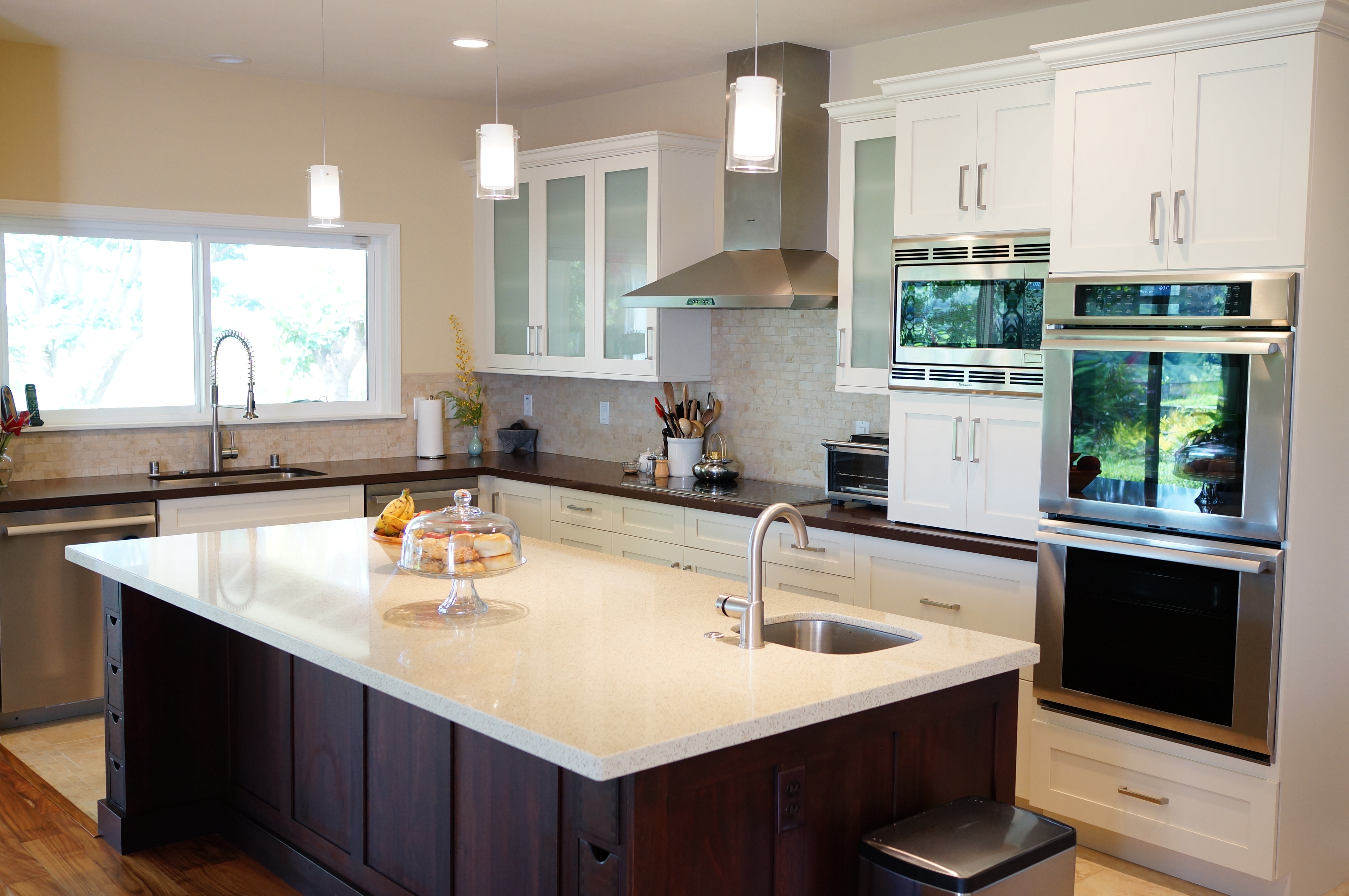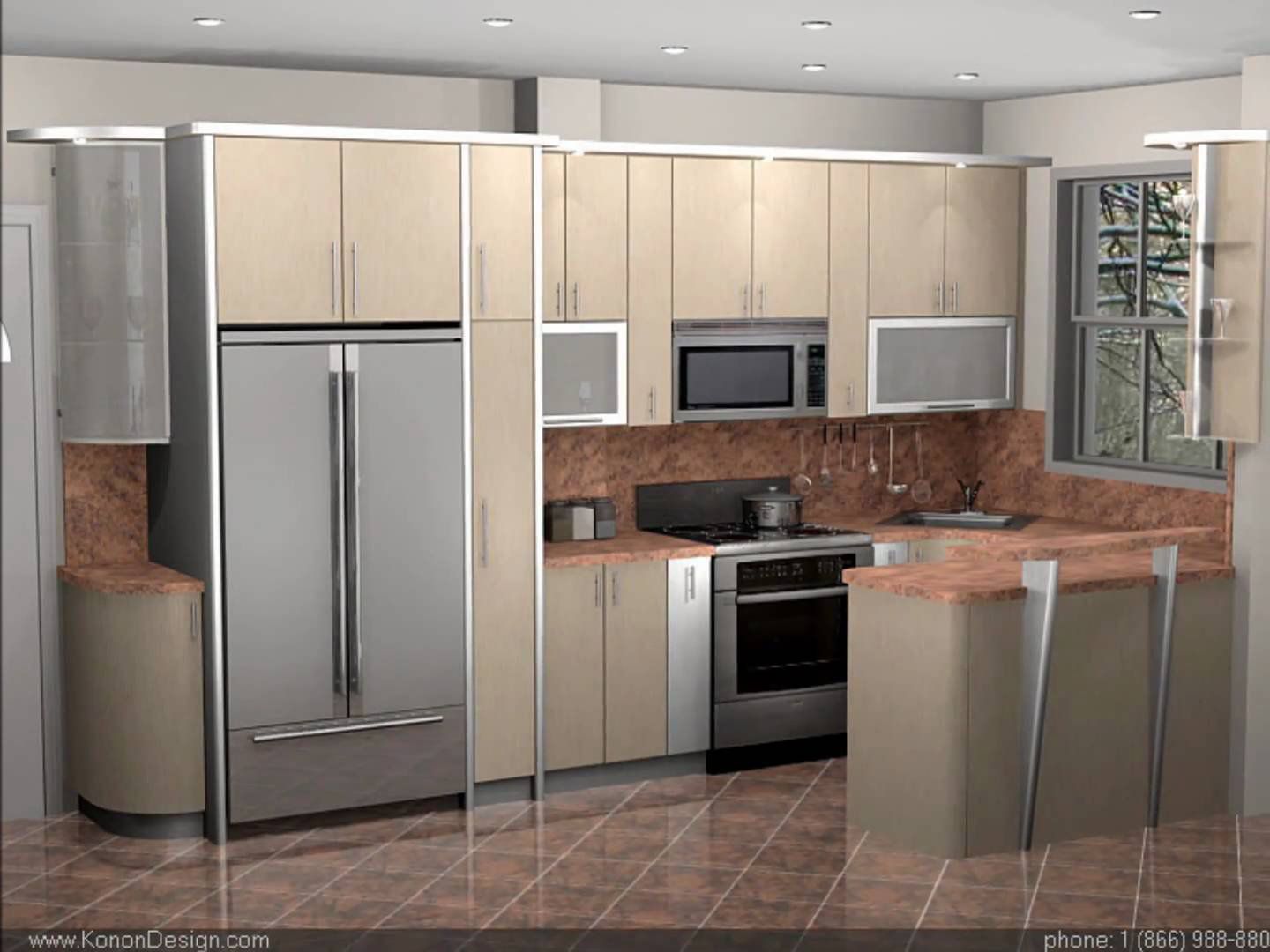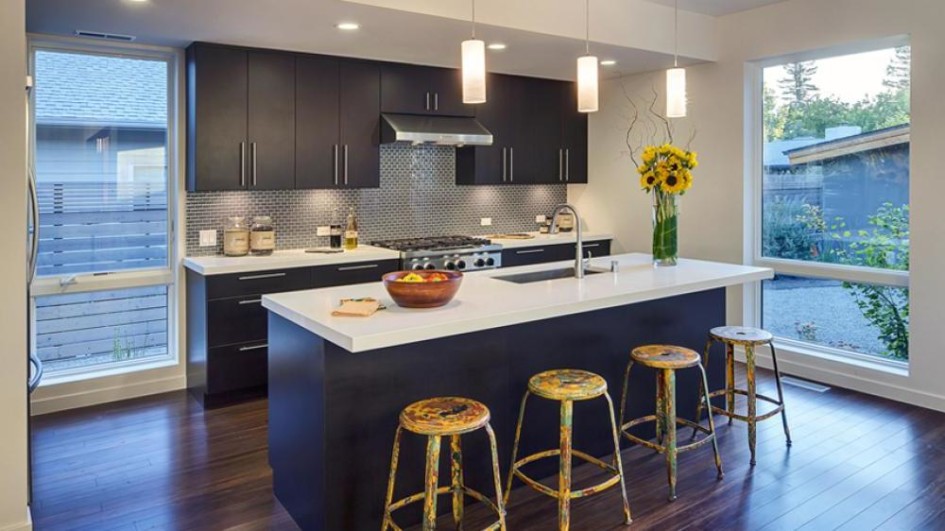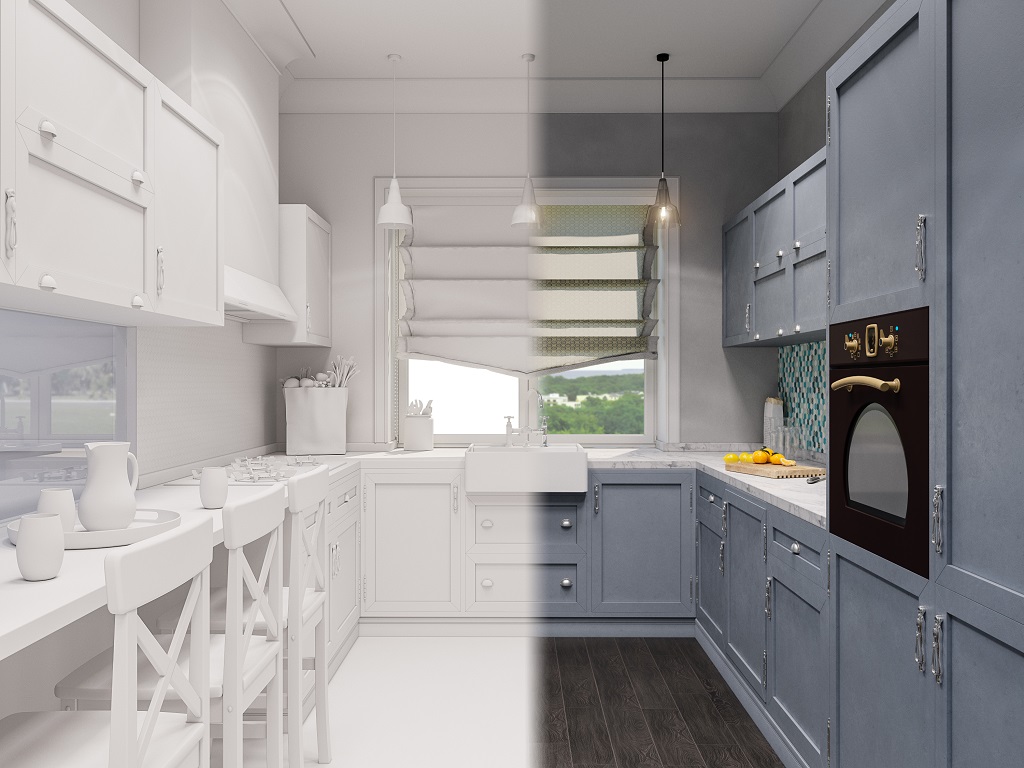When it comes to designing your kitchen, simplicity can often be the key to creating a functional and stylish space. With the right design elements, you can transform your kitchen into a welcoming and efficient area that meets all your needs. Here are 10 simple kitchen design ideas that will help you achieve a beautiful and practical kitchen.Simple Kitchen Design Ideas
1. Maximize storage space: One of the most important aspects of a simple kitchen design is efficient storage. Make use of vertical space by installing shelves and cabinets that reach the ceiling. You can also incorporate pull-out pantry shelves or a kitchen island with built-in storage to maximize space. 2. Choose a neutral color scheme: Neutral colors like white, beige, or grey can help create a clean and simple look in your kitchen. These colors also make the space feel larger and more open. 3. Utilize natural light: Natural light not only brightens up your kitchen but also creates a warm and inviting atmosphere. Make sure to have plenty of windows or install skylights to let in as much natural light as possible. 4. Incorporate open shelving: Open shelves can add a touch of visual interest to your kitchen while also providing easy access to frequently used items. They are also a great way to display your favorite dishes or cookbooks. 5. Invest in quality countertops: The countertops are one of the most used surfaces in the kitchen, so it's important to choose durable and easy-to-clean materials. Quartz, granite, and laminate are all great options for a simple kitchen design. 6. Use a simple backsplash: A simple backsplash can add a pop of color or texture to your kitchen without overwhelming the space. Consider using subway tiles or a simple mosaic pattern for a clean and classic look. 7. Opt for streamlined appliances: Bulky and complicated appliances can disrupt the simplicity of your kitchen design. Choose appliances with a minimalist and streamlined design to maintain a cohesive look in your kitchen. 8. Keep the layout functional: When designing your kitchen, think about the flow and efficiency of the space. Keep frequently used items within easy reach and make sure there is enough counter space for food prep. 9. Incorporate natural elements: Adding natural elements like plants, wood, or stone can bring a sense of warmth and tranquility to your kitchen. Consider incorporating these elements through a kitchen island, wooden shelves, or a small indoor herb garden. 10. Keep it clutter-free: The key to a simple kitchen design is to keep it clutter-free. Make sure to have designated spaces for all your kitchen items and regularly declutter to maintain a clean and organized space.10 Simple Kitchen Design Ideas
Creating a simple kitchen design doesn't have to be a daunting task. With these easy kitchen design ideas, you can transform your space into a functional and stylish area in no time. 1. Choose a single color scheme: A monochromatic color scheme can give your kitchen a clean and cohesive look. Stick to shades of one color for your walls, cabinets, and countertops for an easy and streamlined design. 2. Install under-cabinet lighting: Under-cabinet lighting not only adds a touch of ambiance to your kitchen but also provides additional task lighting for food prep. LED strip lights are a popular and energy-efficient option for under-cabinet lighting. 3. Use pull-out shelves: Make use of every inch of storage space in your kitchen by installing pull-out shelves in your cabinets. This allows you to easily access items at the back of the cabinet without having to dig through everything in front. 4. Create an accent wall: If you want to add a pop of color or texture to your kitchen, consider creating an accent wall with a bold wallpaper or a brightly painted wall. This can add visual interest without overwhelming the overall design. 5. Invest in quality flooring: The flooring in your kitchen should be both durable and easy to clean. Consider materials like hardwood, tile, or vinyl for a simple and functional kitchen design. 6. Keep the sink area clutter-free: The sink area can quickly become a cluttered mess in a kitchen. Keep it clean and organized by installing a sink with built-in storage for sponges and dish soap, and using a drying mat instead of a dish rack. 7. Choose a single style: Mixing and matching different styles in your kitchen can create a cluttered and chaotic look. Stick to one design style, whether it be modern, farmhouse, or traditional, for a simple and cohesive kitchen design. 8. Install a pot rack: If you have limited cabinet space, consider installing a pot rack to free up space and add a touch of visual interest to your kitchen. This is also a great way to display your collection of pots and pans. 9. Make use of wall space: Instead of cluttering up your countertops with appliances and utensils, consider using wall-mounted storage solutions to keep them off the counter and within easy reach. 10. Use a bold focal point: If you want to add a bold element to your simple kitchen design, consider using a statement piece like a colorful rug or a unique light fixture to create a focal point in the space.Easy Kitchen Design Ideas
A minimalist kitchen design is all about simplicity and functionality. With these ideas, you can create a sleek and clutter-free kitchen that will make meal prep a breeze. 1. Stick to a neutral color palette: Neutral colors like white, grey, and beige are a staple in minimalist design. They create a clean and calming atmosphere in the kitchen and allow other design elements to stand out. 2. Choose sleek and simple cabinets: The cabinet design can make or break a minimalist kitchen. Opt for clean and simple cabinets with minimal hardware to maintain the sleek and clutter-free look. 3. Keep countertops clear: In a minimalist kitchen, countertops should be kept as clear as possible. This not only creates a clean and streamlined look but also makes it easier to clean and maintain. 4. Incorporate hidden storage: To keep your minimalist kitchen clutter-free, consider incorporating hidden storage solutions like pull-out pantries or a hidden spice rack. 5. Choose a single focal point: In a minimalist kitchen, it's important to keep the focus on one statement piece. This could be a unique light fixture, a bold backsplash, or a colorful piece of artwork. 6. Make use of natural light: Natural light is a key element of minimalist design. Make sure to have plenty of windows or install skylights to let in as much natural light as possible. 7. Use geometric shapes: Geometric shapes are a common element in minimalist design and can add visual interest to a simple kitchen. Consider incorporating them through backsplash tiles, rugs, or light fixtures. 8. Choose a simple and functional layout: In a minimalist kitchen, the layout should be as efficient and functional as possible. Keep frequently used items within easy reach and make sure there is enough counter space for food prep. 9. Incorporate natural materials: Natural materials like wood, stone, and concrete can add warmth and texture to a minimalist kitchen. Consider using them for countertops, flooring, or a kitchen island. 10. Keep it clutter-free: The key to a successful minimalist kitchen design is to keep it clutter-free. Regularly declutter and only keep essential items on display to maintain the clean and streamlined look.Minimalist Kitchen Design
Having a small kitchen doesn't mean you can't have a beautiful and functional space. With these simple design ideas, you can make the most out of your small kitchen. 1. Choose light colors: Light colors can make a small kitchen feel larger and more open. Stick to white, beige, or light grey for walls and cabinets to create a bright and airy space. 2. Install open shelving: In a small kitchen, open shelving can help create the illusion of more space while also providing easy access to frequently used items. Use them for dishes, glasses, or cookbooks. 3. Invest in multi-functional furniture: In a small kitchen, every inch of space counts. Consider investing in multi-functional furniture like a kitchen island with built-in storage or a fold-down table for dining. 4. Keep the layout simple: In a small kitchen, the layout should be as efficient and functional as possible. Avoid adding unnecessary elements that can take up valuable space. 5. Make use of vertical space: When working with a small kitchen, it's important to utilize vertical space. Install shelves or cabinets that reach the ceiling to maximize storage space. 6. Opt for a single-bowl sink: In a small kitchen, a single-bowl sink can free up valuable counter space. This also makes it easier to clean larger pots and pans. 7. Choose small appliances: Instead of bulky and space-consuming appliances, opt for smaller versions that can easily be stored when not in use. This will help create a more streamlined and clutter-free look in your small kitchen. 8. Use reflective surfaces: Reflective surfaces like mirrors or glass can create the illusion of more space in a small kitchen. Consider incorporating them through a mirrored backsplash or glass cabinet doors. 9. Keep it organized: In a small kitchen, organization is key. Make use of drawer dividers, cabinet organizers, and wall-mounted storage to keep everything in its place. 10. Choose a cohesive design: To make a small kitchen feel more spacious, it's important to have a cohesive design. Stick to a single color scheme and design style to create a seamless and visually appealing space.Small and Simple Kitchen Design
A basic kitchen design is all about functionality and practicality. With these simple ideas, you can create a basic kitchen that meets all your needs. 1. Choose durable materials: In a basic kitchen design, it's important to choose materials that can withstand heavy use. Consider materials like quartz or granite for countertops and hardwood or tile for flooring. 2. Incorporate plenty of storage: A basic kitchen should have ample storage for all your kitchen items. Make use of cabinets, shelves, and drawers to keep everything organized and easily accessible. 3. Stick to a simple color scheme: A basic kitchen design should have a clean and simple color scheme. Stick to neutral colors like white, beige, or grey for a timeless and versatile look. 4. Maximize counter space: In a basic kitchen, counter space is essential. Make sure to have enough space for food prep and consider adding a kitchen island for extra counter space and storage. 5. Choose classic design elements: A basic kitchen design should stand the test of time. Stick to classic design elements like subway tiles, shaker-style cabinets, and simple light fixtures for a timeless and versatile look. 6. Incorporate task lighting: In a basic kitchen, task lighting is essential for food prep and cooking. Make sure to have sufficient lighting above the sink, stove, and countertops. 7. Keep the layout functional: In a basic kitchen, the layout should be efficient and practical. Keep frequently used items within easy reach and make sure there is enough counter space for food prep. 8. Choose easy-to-clean surfaces: In a basic kitchen, it's important to choose surfaces that are easy to clean and maintain. Consider materials like laminate or quartz for countertops and hardwood or tile for flooring. 9. Keep it clutter-free: The key to a successful basic kitchen design is to keep it clutter-free. Regularly declutter and only keep essential items on display to maintain a clean and functional space. 10. Incorporate natural elements: Adding natural elements like plants, wood, or stone can bring a touch of warmth and texture to a basic kitchen design. Consider incorporating them through a kitchen island, wooden shelves, or a small indoor herb garden.Basic Kitchen Design
An efficient kitchen design is all about making the most out of your space and creating a functional and practical area. With these ideas, you can create an efficient kitchen that meets all your needs. 1. Choose a U-shaped layout: A U-shaped kitchen layout is the most efficient for cooking and food prep. This layout allows for the most counter space and easy movement between the sink, stove, and refrigerator.Efficient Kitchen Design
The Benefits of a Very Simple Kitchen Design
/exciting-small-kitchen-ideas-1821197-hero-d00f516e2fbb4dcabb076ee9685e877a.jpg)
Efficiency and Functionality
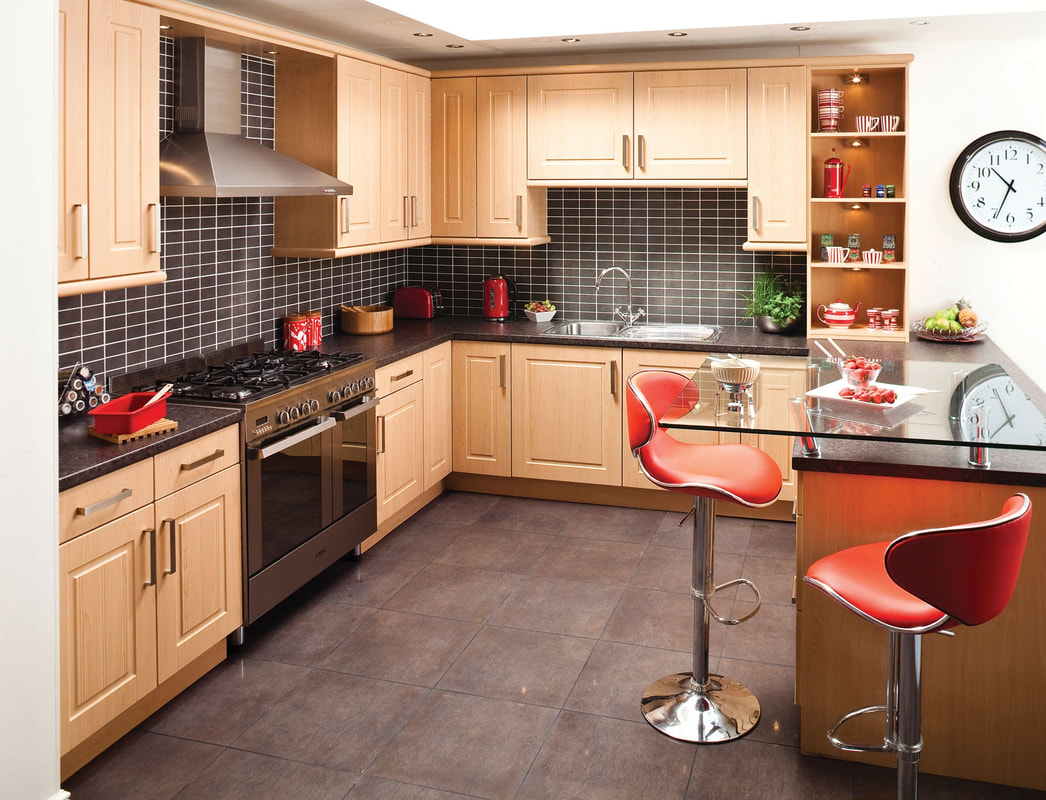 A very simple kitchen design may not seem like the most exciting or stylish option, but it can actually offer numerous benefits that can greatly improve your overall house design. One of the main advantages of a simple kitchen design is its efficiency and functionality. By eliminating unnecessary clutter and excess features, a simple kitchen design allows for a more streamlined and organized space. This not only makes it easier to find and access the items you need, but it also saves you time and energy in the long run.
A very simple kitchen design may not seem like the most exciting or stylish option, but it can actually offer numerous benefits that can greatly improve your overall house design. One of the main advantages of a simple kitchen design is its efficiency and functionality. By eliminating unnecessary clutter and excess features, a simple kitchen design allows for a more streamlined and organized space. This not only makes it easier to find and access the items you need, but it also saves you time and energy in the long run.
Cost-Effective
/Small_Kitchen_Ideas_SmallSpace.about.com-56a887095f9b58b7d0f314bb.jpg) Another advantage of a very simple kitchen design is its cost-effectiveness. With fewer elements and features, a simple kitchen design is often more budget-friendly compared to more elaborate designs. This can be particularly beneficial for homeowners on a tight budget or those looking to save money on their house design. Additionally, a simple kitchen design also means less maintenance and upkeep, resulting in further cost savings in the long term.
Another advantage of a very simple kitchen design is its cost-effectiveness. With fewer elements and features, a simple kitchen design is often more budget-friendly compared to more elaborate designs. This can be particularly beneficial for homeowners on a tight budget or those looking to save money on their house design. Additionally, a simple kitchen design also means less maintenance and upkeep, resulting in further cost savings in the long term.
Customization and Personalization
 Contrary to popular belief, a simple kitchen design does not equate to a boring or generic look. In fact, a simple kitchen design can be just as unique and personalized as a more complex one. With a minimalist approach, you have the opportunity to highlight specific design elements and showcase your personal style. From choosing the perfect color scheme to incorporating unique and eye-catching accents, a simple kitchen design allows for ample customization and personalization.
Contrary to popular belief, a simple kitchen design does not equate to a boring or generic look. In fact, a simple kitchen design can be just as unique and personalized as a more complex one. With a minimalist approach, you have the opportunity to highlight specific design elements and showcase your personal style. From choosing the perfect color scheme to incorporating unique and eye-catching accents, a simple kitchen design allows for ample customization and personalization.
Timeless Appeal
 Trends and styles come and go, but a very simple kitchen design has a timeless appeal that will never go out of style. This is especially important for homeowners who are looking for a house design that will stand the test of time. With a simple kitchen design, you won't have to worry about constantly updating or renovating your space to keep up with the latest trends. Plus, a simple kitchen design can easily adapt to different design aesthetics, making it a versatile option for any homeowner.
In conclusion, a very simple kitchen design offers a multitude of benefits that can greatly enhance your house design. From improved efficiency and functionality to cost-effectiveness and timeless appeal, a simple kitchen design is a practical and stylish choice for any homeowner. So, if you're looking to create a functional, budget-friendly, and timeless kitchen, consider opting for a simple design that will leave a lasting impression.
Trends and styles come and go, but a very simple kitchen design has a timeless appeal that will never go out of style. This is especially important for homeowners who are looking for a house design that will stand the test of time. With a simple kitchen design, you won't have to worry about constantly updating or renovating your space to keep up with the latest trends. Plus, a simple kitchen design can easily adapt to different design aesthetics, making it a versatile option for any homeowner.
In conclusion, a very simple kitchen design offers a multitude of benefits that can greatly enhance your house design. From improved efficiency and functionality to cost-effectiveness and timeless appeal, a simple kitchen design is a practical and stylish choice for any homeowner. So, if you're looking to create a functional, budget-friendly, and timeless kitchen, consider opting for a simple design that will leave a lasting impression.







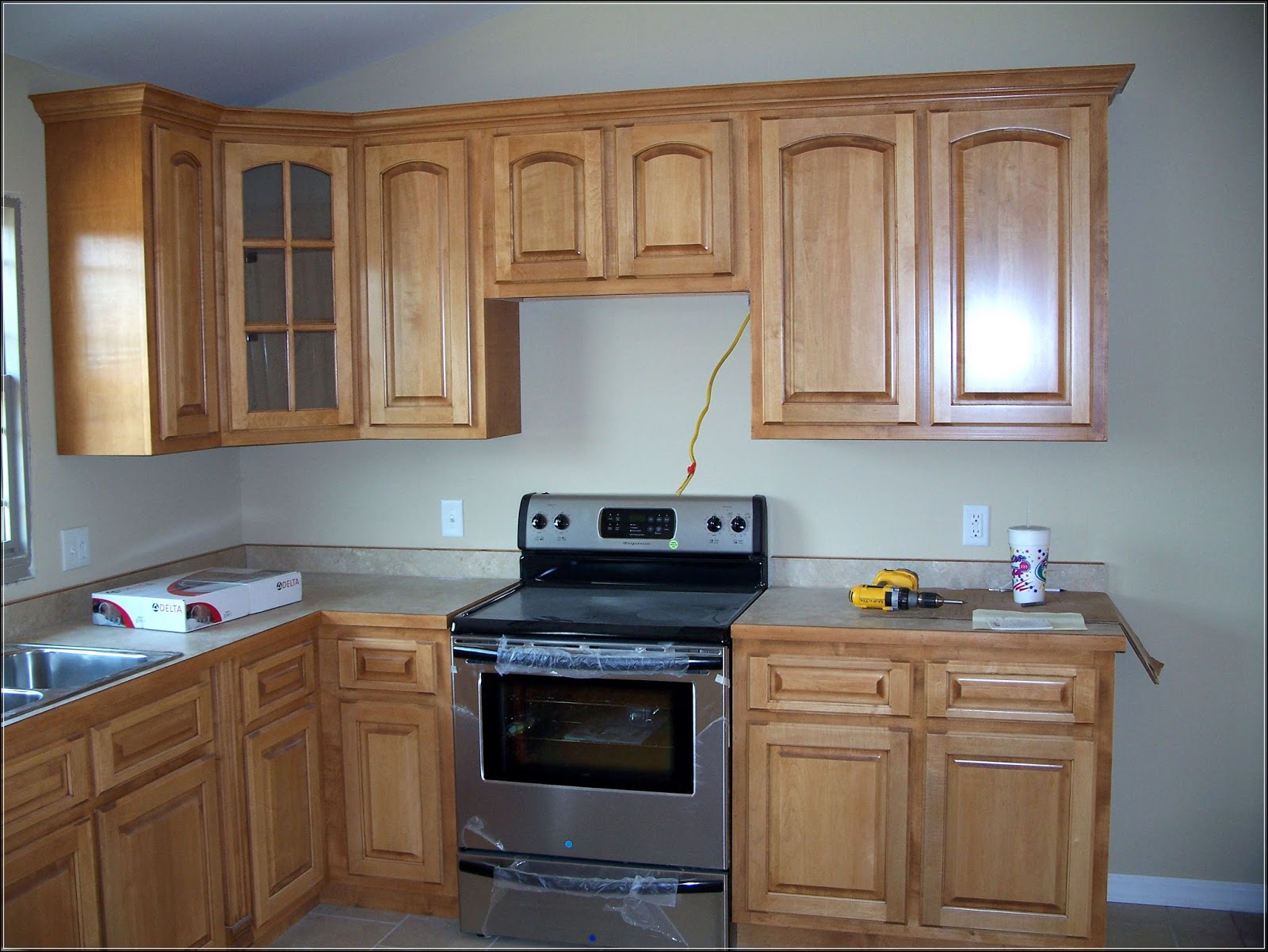
:max_bytes(150000):strip_icc()/green-simple-kitchen-design-470d28a372d340268fbe0d48635c3750.jpg)

















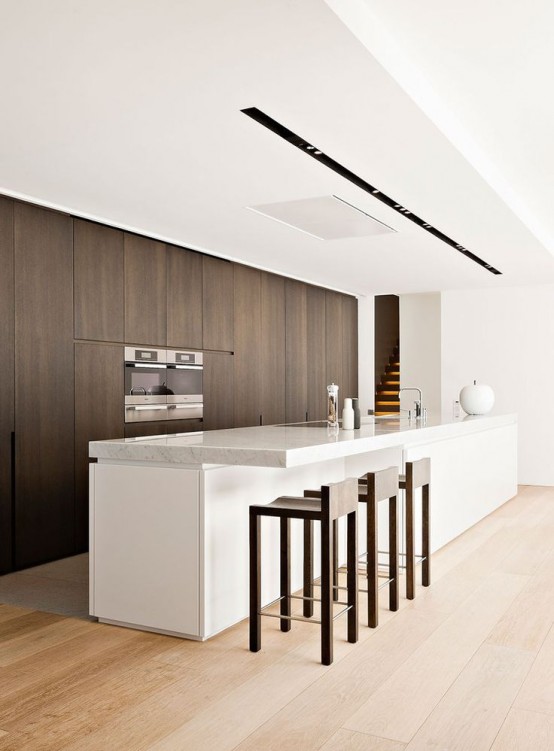

/AlisbergParkerArchitects-MinimalistKitchen-01-b5a98b112cf9430e8147b8017f3c5834.jpg)

/LLanzetta_ChicagoKitchen-a443a96a135b40aeada9b054c5ceba8c.jpg)
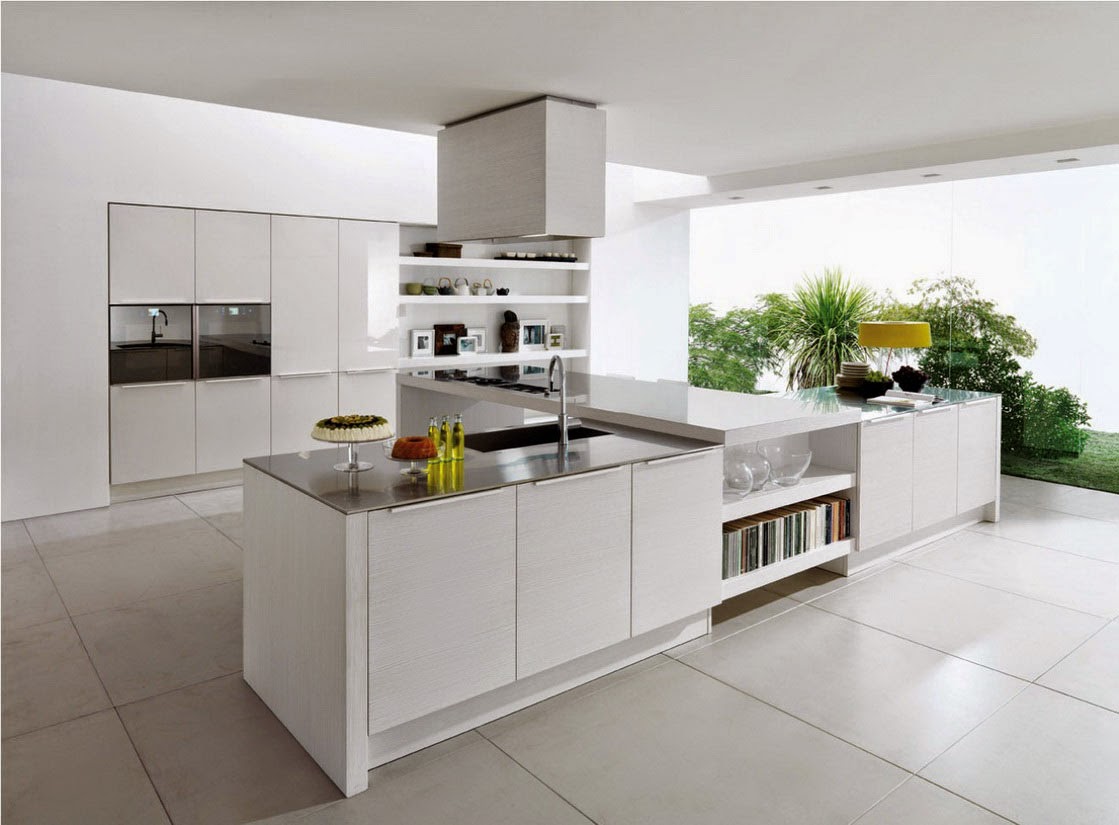






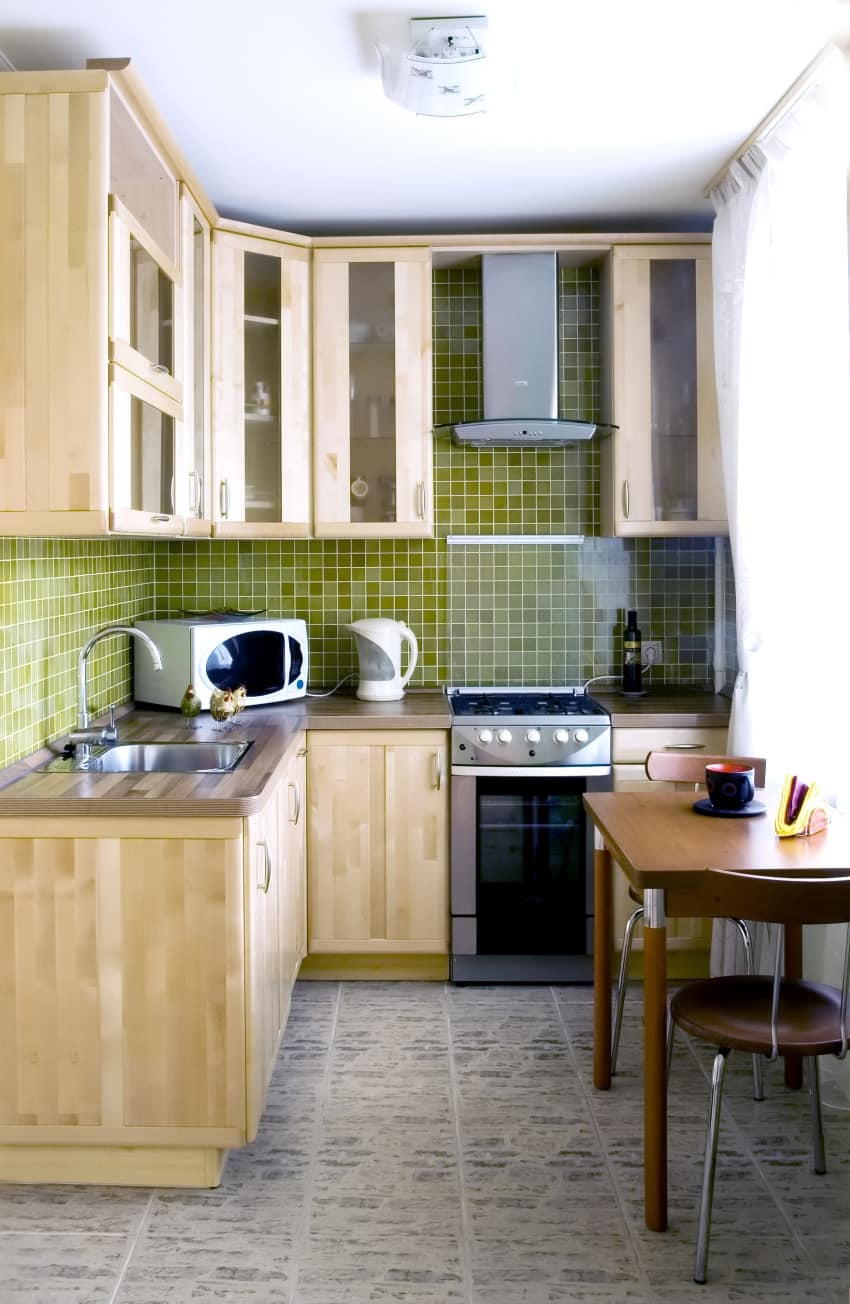






/172788935-56a49f413df78cf772834e90.jpg)
/One-Wall-Kitchen-Layout-126159482-58a47cae3df78c4758772bbc.jpg)
